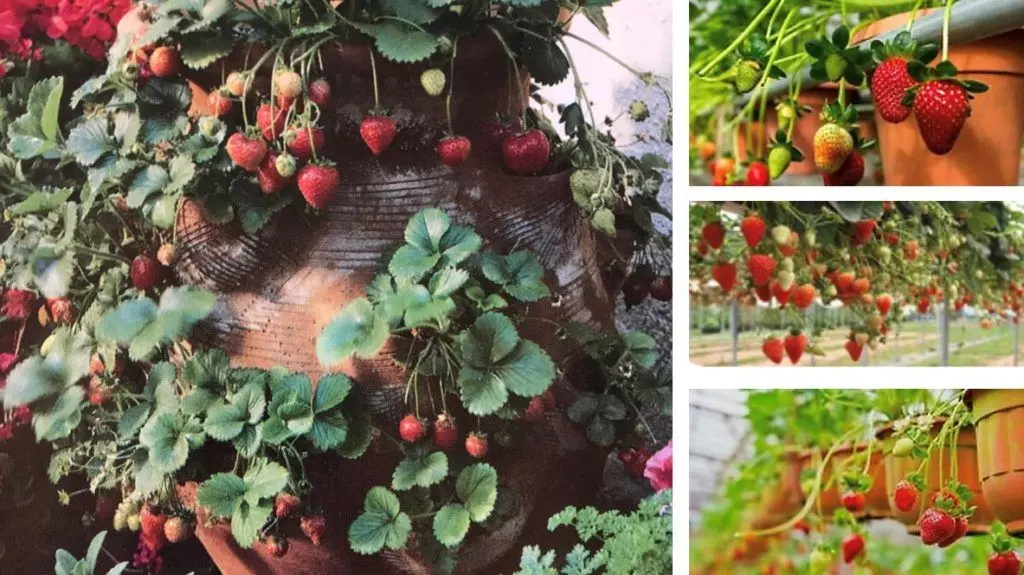Table of Contents
Learn How to Grow Strawberries from Stolons
There are several ways to propagate strawberries. You can grow strawberries from seeds, stolons, or seedlings. But the fastest and most effective method to grow strawberries is to grow them from stolons, also called runners. The strawberry stolon is also known as a strawberry runner. Learn how to harvest in the first season all summer long and keep the plants for many years. Learn How to Grow Strawberries from Stolon or Runner and harvest them in the first season!
Strawberry Stolon or Runners
The fastest and most effective method to grow strawberries is to grow them from runners, also called stolons.
To grow strawberries from runners it is necessary to have a fast and effective new strawberry plant.
The strawberry stolon is a type of asexual vegetative reproduction, which allows the strawberry plant to spread out and move away from the central plant, looking for nutrients. The strawberry stolon can develop another nucleus of roots, at the level of the stolon, obtaining the necessary nutrients to propagate without the need for flowers or seeds.
What is a stolon or runner? Stolons are slightly weak stems that grow horizontally to the ground.
Strawberry stolons, like the stolons of other plants, always originate from the main stem of the plant. Like other stolons, the strawberry stolon always grows very close to the ground (horizontal runners in strawberry).
There are different types of stolons, subterranean stolons that grow below the soil surface, and creeping stolons that grow above the soil surface.
Strawberry stolons are epigeal stolons, also commonly called creeping stolons or runners.
The great advantage of propagating strawberries by stolons, as opposed to other propagation methods, is that the strawberry stolon contains embryonic cells that allow them to root easily (adventitious roots) when in contact or proximity to the soil surface and grow new strawberry plants.
Once the root system of the strawberry stolon is well-developed (adventitious roots), the stolon can be cut and separated from the main plant that gave rise to it, obtaining two independent strawberry plants where one of them was grown from the stolon.
Both strawberry plants will continue to form runners and more strawberry plants can be grown from the strawberry stolons.
Advantages to Grow Strawberry from Stolon (Runners)
Different varieties of strawberries will allow you to cultivate and crop strawberries easily.
Growing strawberries from their seeds is a complicated, not recommended task since it takes time to germinate and the success is low.
However, it’s simple from previously purchased seedlings or reproducing the plants by stolons (runners). Here are the tips for growing strawberries from stolons.
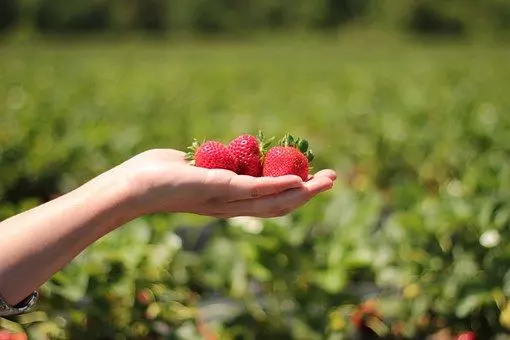
How to Grow Strawberry from Stolon or Runner
Sow from Strawberry seeds can be complicated. For this reason, growing strawberries it’s usually made from previously purchased seedlings, or by reproducing the plants by stolons (runners).
Not all varieties of fruit develop stolons. Likewise, when the variety produces stolons, their formation depends on the hours of light and the temperature.
However, when there are stolons, strawberry reproduction using these is another possibility of reproduction much more effective and less laborious than reproduction by seeds, when there is a previous crop.
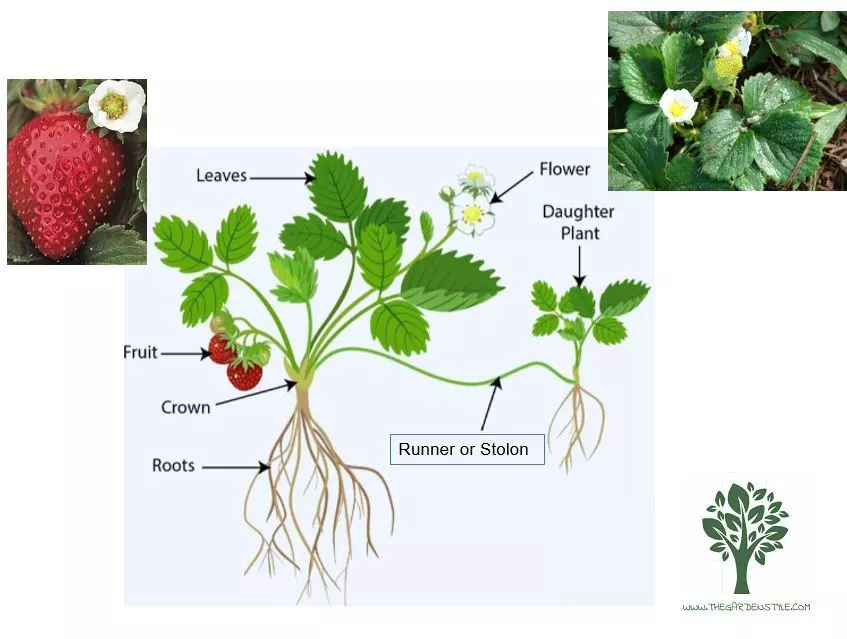
The lateral shoots that come out from the base of the stem are called stolons or runners because of their horizontal growth pattern to the ground line.
Adventitious roots are produced along the stolon that, once rooted and separated from the mother plant, can give rise to a new plant.
The key to making stolon reproduction work is to get it rooted. Use small pieces of metal or wood in a U-shape to prevent the stolon from moving and digging up.
Do not damage the adventitious roots of the stolon, they are still weak but good and prolonged contact with the substrate will strengthen them.
Look for the stolon not to be moved by the wind. Apply regular watering to prevent the substrate from drying out.
As the stolon develops it will take out new leaves. Only then can it be separated from the mother and a new seedling will have been generated.
How to Prepare the Soil for Strawberry Stolons
Let’s start with this step-by-step for growing strawberries from stolons.
As explained in the previous paragraphs, growing strawberries from stolons require that the strawberry stolon develops adventitious roots.
Therefore, our first step in growing strawberries from stolons is to prepare the soil for the strawberry stolons to promote root formation at the stolon level.
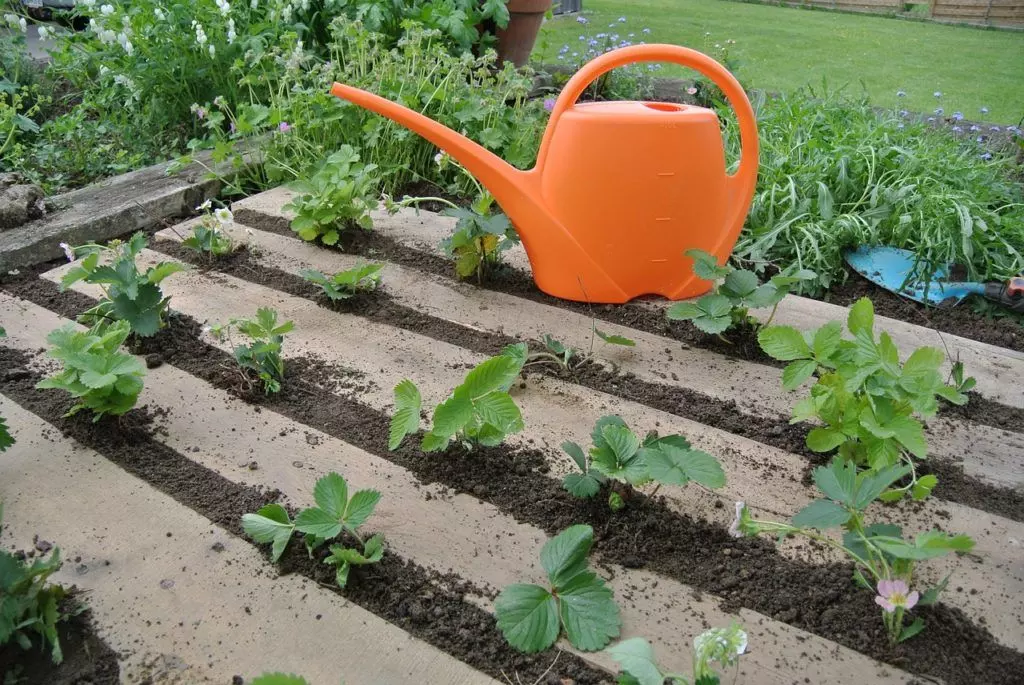
Soil for Strawberry Stolons – The soil to promote the growth at strawberry stolons level must be acidic (pH 5.8 -6.5). The cultivation will thrive best with organic soil. I will suggest measuring the pH and adjusting the pH if needed, as this step is critical to promoting stolons’ growth.
It is advisable to use good quality or even sterile soil, and it is recommended not to use homemade compost soil because of its high content of fungi and bacteria at this stage.
Once the strawberry runners have developed and matured their root system and are fully forming a new plant, homemade compost can be used. Also, I would recommend using plastic support for strawberries to keep the berries away from insects and wet soil, thus preventing fungal diseases.
- Every Pack including 2 rails, 4 stakes and connecting rod that make up a complete strawberry stand.
- Easy to assemble, fit the support around your existing plants, snap together two ends, lock buttons and gently insert legs of the support into the ground.
- Best to use the supports before your strawberry plants get big but they will still help.Just easier to place the supports.
Fertilization for Strawberry Stolons – Fertilizer needed 4-3-6 NPK (meaning 4% of Nitrogen, 3% of Phosphorous, and 6 % of Potassium). Learn more about different types of fertilizers.
Strawberry plants can be cultivated in different types of soils, from heavy to light (sandy soils) but slightly acidic.
Strawberries need a substrate with good drainage to avoid disease caused for excess humidity. The soil should be rich in organic matter. The most recommended are the soils with worm humus on the composition.
When and How to Transfer Strawberry Seedling from Stolon
Strawberry Seedlings obtained from seeds or obtained in the nurseries or from the stolons (runners) of your previous plant should be ready to be transferred or transplanted to their final location outdoors or in a pot, during spring and fall.
The best time to transfer strawberry seedlings is when there are no extreme temperatures, especially when it is not too cold.
Depending on whether you have transferred your strawberry seedlings to pots (growing strawberries in a pot) or keep your strawberries growing in beds or on the ground (strawberry care outdoors), we recommend reading about the strawberry care you should take in the next stages until harvest.
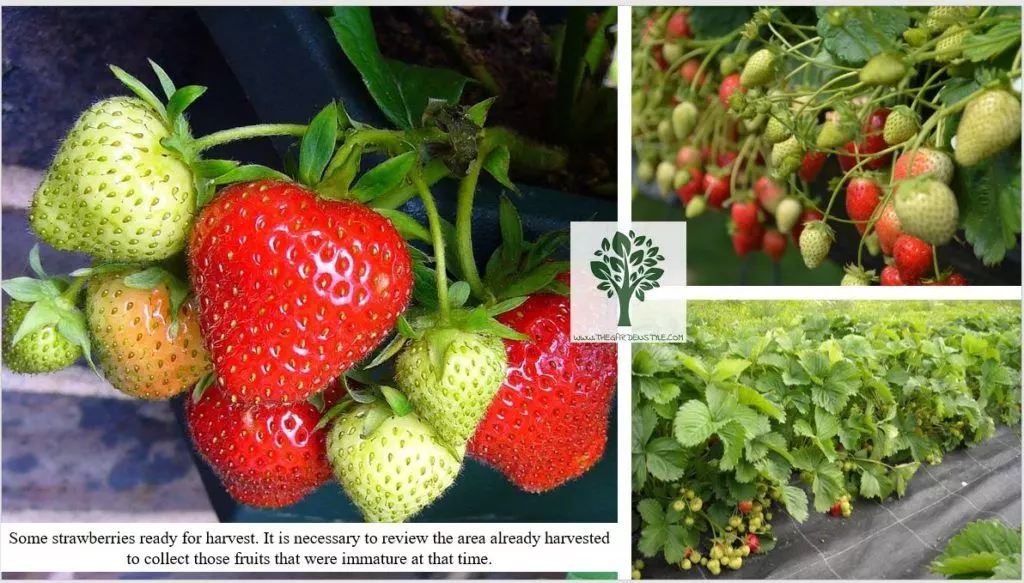
How to Improve Strawberry Crops
Let’s review a few scientific articles recently published with ideas to improve strawberry crops using bio-stimulators and pursuing bio-promotion of growth.
Improve Strawberry Crops with Bio-Stimulation or Bio-Promotion of Growth
Improve Strawberry Crops with Bio-Stimulation or Bio-Promotion of Growth. This practice is widely used in large-scale agriculture. Bio-stimulation can be understood as the induction to promote or delay a physiological process.
The process implies the application of products for this purpose, integrated with soil or foliage management practices that facilitate the adequate growth and development of the plant. This is compatible with sustainable agroecological systems since they allow for maintaining a dynamic intra-farm balance.
Bio-stimulants or Bio-Promoters are organic substances that are used to enhance the growth and development of plants and provide greater resistance to biotic and abiotic stress conditions. For examples, extreme temperatures, water stress due to deficit or excess humidity, salinity, toxicity, and the incidence of pests, and/or diseases.
Its composition can include auxins, gibberellins (as plant hormone), cytokinins, abscisic acid, jasmonic acid, or other phytohormones.
The products leave no residue and are safe for the people who apply them. Its composition is diverse, in commercial mixtures of mineral nutrients, organic compounds, or active ingredients.
Other Bio-Stimulant Practices for Improving Strawberry Crops
Other Bio-Stimulant Practices for Strawberries. Application of growth-promoting for Strawberries rhizobacteria, such as Bacillus, Rhizobium, Trichoderma, Nitrobacter, Nitrosomonas, Pseudomonas, Aspergillus, Azotobacter, among others.
These natural bio-stimulants favor the synthesis of phytohormones and the absorption of nutrients. They have a resistance function against negative soil microorganisms.
We hope that this article on how to grow strawberries from stolon will be useful and that you will have a good learning experience.
Recommended reading: Best Companion Plants for Strawberries (and Plants to Avoid)
